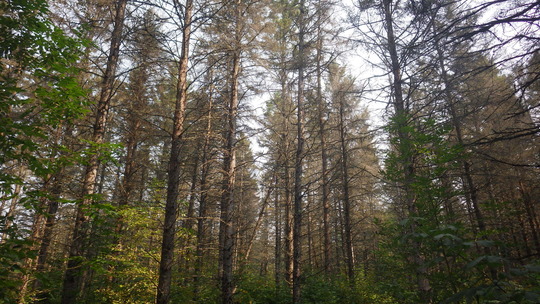|
February 15, 2024
 Trees defoliated by spruce budworm.
Our Forest Health Annual Report summarizes statewide surveys for insects and pests that cause trouble or concern in the woods. Watching trends and monitoring outbreaks allows public land managers and private woodland owners to keep forests healthy by adjusting management approaches and preparing for future challenges.
So, what did we find?
Spruce budworm
Spruce budworm damage was mapped on around 664,800 acres of fir and spruce forests in 2023, the highest number of acres the native caterpillar has impacted in one year since 1961.
Eastern larch beetle
In Minnesota's 23rd straight year of outbreak from the native bark beetle, damage surpassed a cumulative 1 million acres of tamarack since 2001. Fortunately, recent research from DNR and the University of Minnesota showed that some forests are recovering naturally over time.
Emerald ash borer
In 2023, EAB was officially confirmed for the first time in a record-tying 8 counties, raising the total counties under quarantine to 46 out of 87.
Read about these findings and more in the 2023 Forest Health Annual Report.
Did you know?
Each year, the DNR and USDA Forest Service aerially survey much of Minnesota’s forests, tracking outbreaks of forest insect and disease damage. Past Forest Health Annual Reports (1969-present) are available online.
|